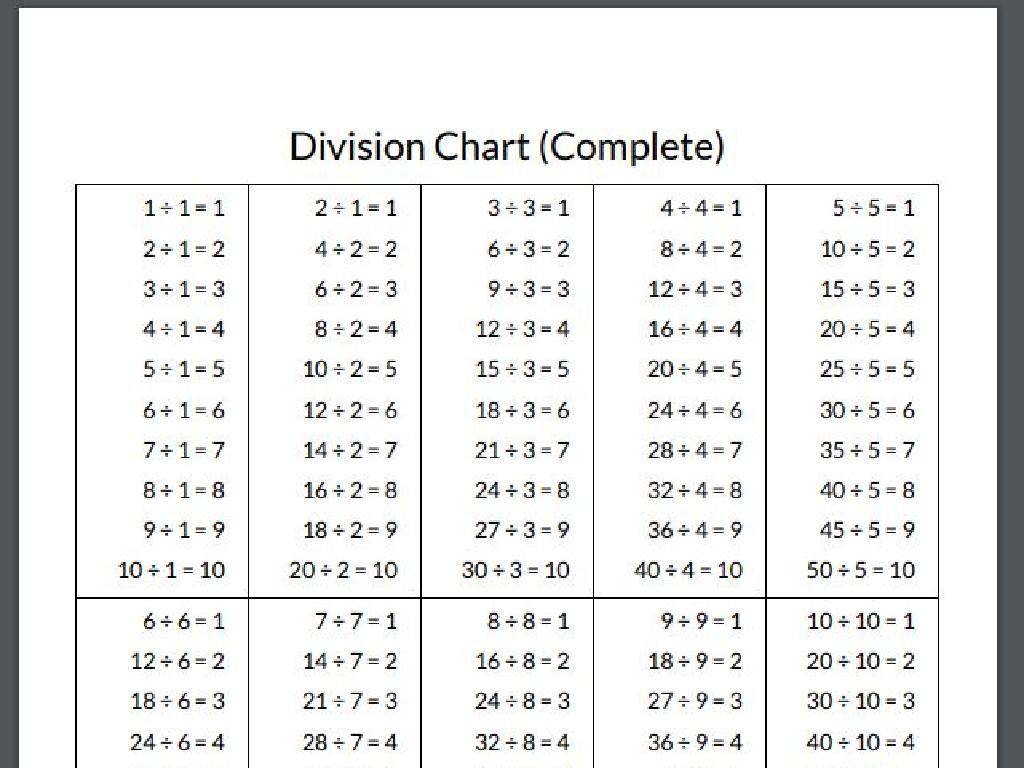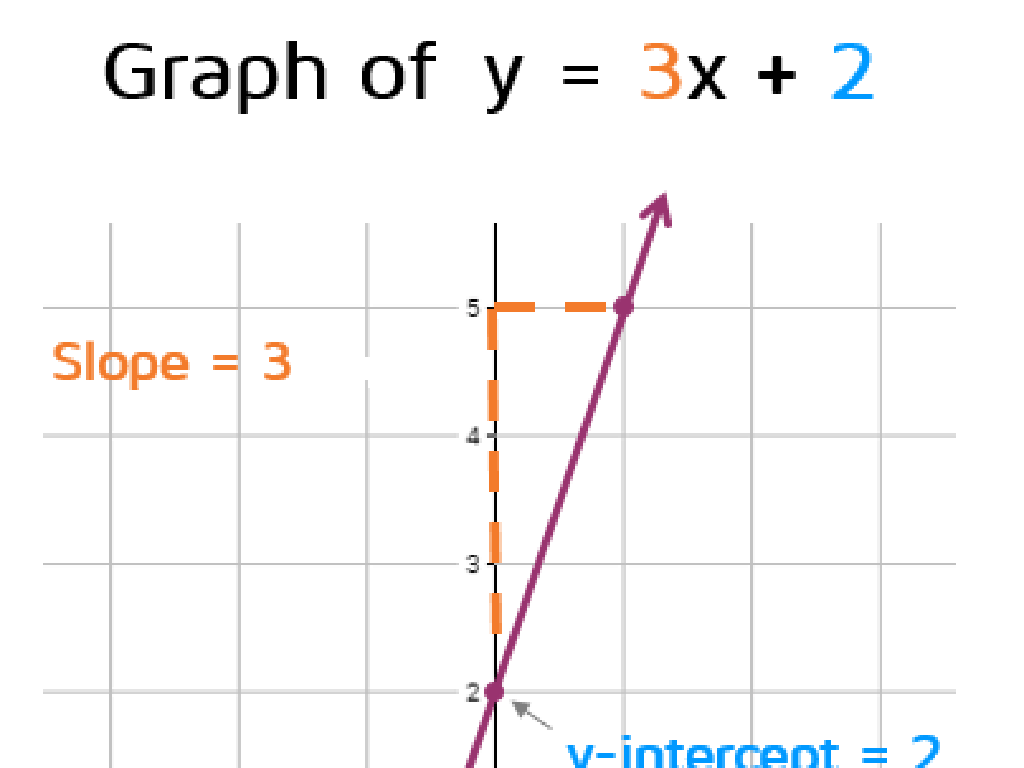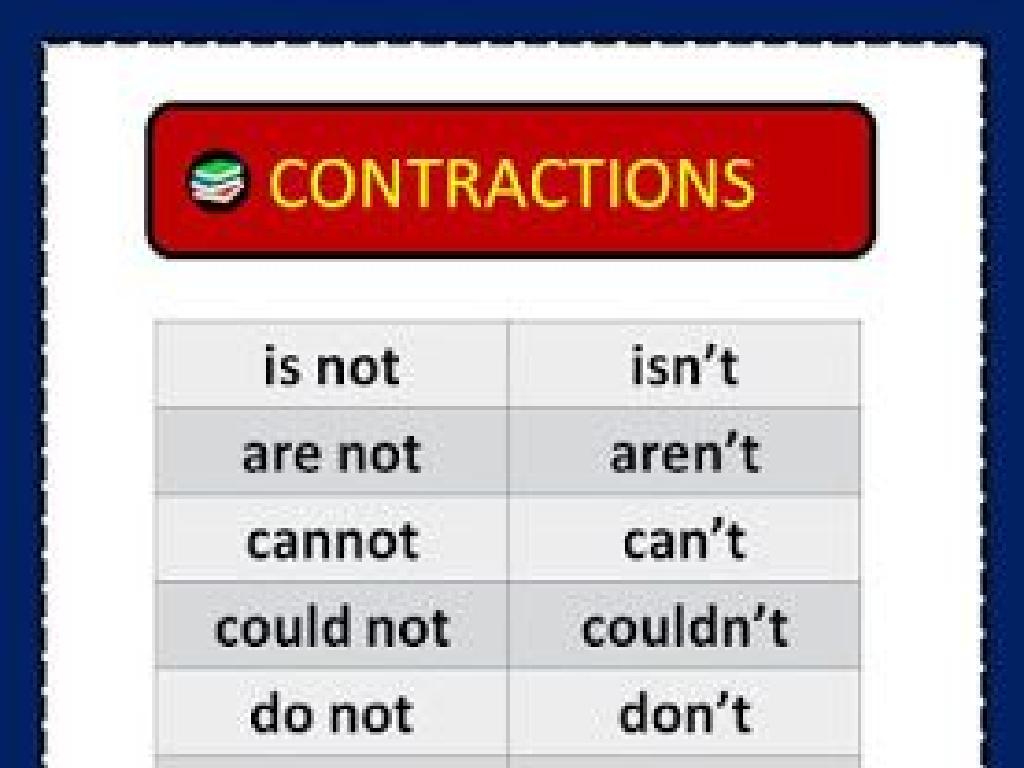Match Plants To Their Parents
Subject: Science
Grade: Kindergarten
Topic: Plants
Please LOG IN to download the presentation. Access is available to registered users only.
View More Content
Welcome to the World of Plants!
– Today we learn about plants
– Name plants you’ve seen
– Think about plants at home or in the park
– Baby plants & parent plants
– Just like you and your parents, baby plants resemble their parent plants!
– Matching game
– We’ll play a game matching baby plants to their parents
|
This slide is designed to introduce kindergarten students to the concept of heredity in plants. Start the class by asking the children to name familiar plants, which could include flowers, trees, or even vegetables they’ve seen at home or in their community. Explain that plants have families too, and baby plants often look like their parent plants. This can be related to how the children resemble their own parents. To make the learning interactive and fun, organize a matching game where children match pictures of baby plants to their corresponding parent plants. This activity will help solidify their understanding of the topic through visual association and play.
What Are Plants?
– Plants are living things
– They grow in soil and have parts like stem, leaves, and roots.
– Plants need four things to live
– They need soil, water, air, and sunlight to grow.
– Plants come in different sizes
– Some plants are big like trees, some are small like grass.
– Matching plants to their parents
– We’ll learn how baby plants look like their parent plants.
|
This slide introduces the concept of plants to Kindergarten students. Begin by explaining that plants are living things, just like animals and humans, and they have different parts that serve various functions. Emphasize the four essential elements plants need to survive: soil, water, air, and sunlight. Highlight the diversity in plant sizes by comparing trees and grass, making it relatable by pointing out plants they see every day. Introduce the concept of plant families and how offspring plants resemble their parents, setting the stage for an activity where students will match baby plants to their parent plants. Use real-life examples or illustrations to make the matching activity engaging.
Meet the Plant Parents!
– Plants have ‘parents’ and ‘babies’
– Just like animals, plants have families too!
– Big trees and flowers as parents
– Look at a big tree and imagine it as a mommy or daddy plant.
– Parent plants create baby plants
– Seeds from parents grow into new plants, like babies!
– Observing plant family similarities
|
This slide introduces the concept of plant reproduction to Kindergarten students by relating it to the familiar concept of parents and babies. Explain that in the plant world, the ‘parent’ is a mature plant, such as a big tree or a flowering plant, which produces seeds. These seeds can grow into new, ‘baby’ plants. Encourage the children to think about how a baby plant might look similar to its parent plant, just like they might look like their own parents. You can bring in seeds and fully grown plants for a show and tell to make the learning more interactive.
How Do Plants Look Like Their Parents?
– Baby plants come from seeds
– Tiny versions of parent plants
– Just like you resemble your parents, baby plants resemble theirs too!
– Grow to resemble parents more
– As they get bigger, they look even more like the parent plant!
– Observing plant growth stages
– Watch how a seed sprouts and changes as it grows up!
|
This slide aims to help Kindergarten students understand the concept of heredity in plants by observing similarities between parent plants and their offspring. Start by explaining that all plants start as seeds, which are like tiny babies that come from the parent plant. As these seeds grow into baby plants, they look like miniature versions of their parents. Over time, as they grow bigger, they start to look more and more like the parent plant. Encourage the students to think about how they look like their own parents and relate it to how baby plants resemble their plant parents. You can bring in a few seeds and pictures of adult plants to show the growth stages, making it easier for the children to visualize the concept.
Plant Matching Game: Baby and Parent Plants
– Match baby plants to parents
– Look at the little plants and big plants. Can you find the families?
– Observe leaves, color, and shape
– Leaves can be big or small, green or purple. Colors and shapes help us guess!
– Ready to play the matching game?
– Get set for a fun game to see which baby plant comes from which parent plant!
|
This slide introduces a fun and interactive game for Kindergarten students to learn about plant heredity by matching baby plants to their parent plants. Encourage the children to carefully observe the leaves, color, and shape of each plant. These characteristics will help them make connections between the baby plants and their parents. The game should be designed with clear images of various plants and their offspring. Teachers should prepare several examples of plant pairs and guide the students through the first few matches before letting them try on their own. The activity can be done with real plants or pictures. It’s a great opportunity for hands-on learning and to spark discussions about plant growth and development.
Class Activity: Plant Matching!
– Observe pictures of plants
– Match baby plants to parents
– Look at the shape, color, and size to find matches
– Draw lines to connect pairs
– Have fun making matches!
|
This activity is designed to help students understand the concept of plant reproduction and recognize the similarities between parent plants and their offspring. Provide a variety of plant pictures to ensure diversity. Encourage the children to observe details such as leaf shape, plant structure, and color. This hands-on activity will enhance their observational skills and understanding of plant life cycles. Prepare to assist them in making connections and guide them to notice defining characteristics. After the activity, discuss the matches as a class and reinforce the learning objectives. Possible variations of the activity could include matching seeds to the adult plant, grouping plants by type, or even a memory game with plant pairs.
Review: Plants and Their Baby Sprouts
– Plants are living things
– Baby plants come from seeds
– Seeds are like tiny baby plants
– Baby plants resemble parents
– Just like you look like your parents!
– Matching game: Parents & Babies
– We’ll match sprouts to grown plants
|
This slide is a review of the key concepts we’ve learned about plants. Emphasize that plants are living organisms with various parts like stems, leaves, and roots. Explain that plants start as seeds, which can be considered as baby plants, and as they grow, they often look very similar to their parent plants. This is similar to how children resemble their parents. To reinforce this concept, engage the students in a matching game where they match pictures of baby plants (sprouts) to pictures of the adult plants. This interactive activity will help solidify their understanding of plant growth and development. Make sure to have a variety of plant and sprout images ready for the activity.
Time to Plant Our Own Seeds!
– Plant seeds in cups with soil
– Water them and give them sunlight
– Observe as they grow
– Keep a growth chart in your journal
– Match baby plants to their parents
– We’ll compare our grown plants to pictures of parent plants
|
This activity is designed to give students a hands-on experience with plant growth and the concept of heredity in plants. Provide each student with a cup, soil, and a few seeds. Guide them through the process of planting the seeds and explain the importance of proper care, including watering and placing the cups in sunlight. As the plants grow, encourage the students to observe and record changes in their journals, fostering their observational skills. Once the plants have grown, help the students match their plants to images of the parent plants, reinforcing the idea that offspring resemble their parents. This will also serve as an introduction to the concept of inherited traits in a simple and age-appropriate way.






